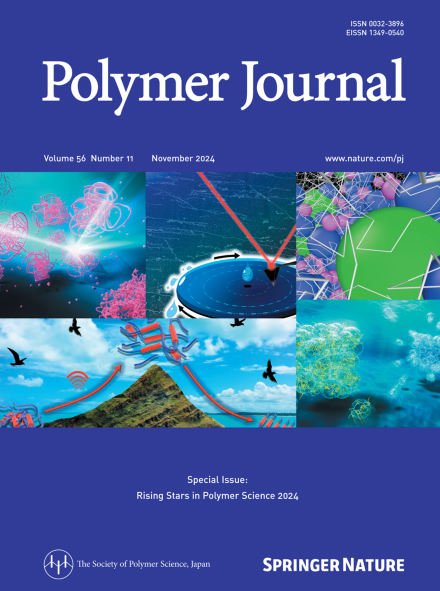Degradation of stable thermosetting epoxy resins mediated by bases in amide solvents
IF 2.3
4区 化学
Q3 POLYMER SCIENCE
引用次数: 0
Abstract
Thermosetting epoxy resins are widely used in our society for adhesives, electronic devices, and building materials owing to their hardness and chemical stability; however, their robustness hinders their ability to chemically degrade to monomers and related low-molecular-weight molecules. Herein, we report the degradation of various thermosetting epoxy resins prepared from bisphenol A diglycidyl ether as a typical epoxy agent and various curing agents, such as diamino arenes, dithiols, and acid anhydrides. The degradation proceeded smoothly when sodium tert-butoxide was used as an activator in a 1,3-dimethyl-2-imidazolidinone solvent at 150 °C to form bisphenol A as a monomer precursor in high yields without any pretreatment. The proposed degradation method was successfully applied to cross-linked thermosetting epoxy resins derived from 4,4’-diaminodiphenylsulfone, a heat-resistant curing agent, commercially available adhesives, and carbon fiber-reinforced composite materials. When composite materials are used, the carbon fibers can be recovered intact. The degradation of various thermosetting epoxy resins prepared from bisphenol A diglycidyl ether as a typical epoxy agent and various curing agents, such as diamino arenes, dithiols, and acid anhydrides proceeded smoothly with sodium tert-butoxide in 1,3-dimethyl-2-imidazolidinone (DMI) solvent at 150 °C to form bisphenol A in high yields. Amide solvents effectively promoted depolymerization and allowed insoluble cross-linked thermosetting epoxy resins to undergo the reaction.

碱介导的稳定热固性环氧树脂在酰胺溶剂中的降解
热固性环氧树脂以其优异的硬度和化学稳定性,广泛应用于胶粘剂、电子器件和建筑材料等领域;然而,它们的坚固性阻碍了它们化学降解为单体和相关低分子量分子的能力。本文报道了以双酚A二甘油酯醚为典型环氧树脂剂和各种固化剂(如二氨基芳烃、二硫醇和酸酐)制备的各种热固性环氧树脂的降解。以叔丁二氧化钠为活化剂,在1,3-二甲基-2-咪唑烷酮溶剂中,在150℃下生成双酚a单体前驱体,降解过程顺利,无需任何预处理。所提出的降解方法已成功应用于由4,4 ' -二氨基二苯砜(一种耐热固化剂)、市售粘合剂和碳纤维增强复合材料制成的交联热固性环氧树脂。当使用复合材料时,碳纤维可以完整地回收。以双酚A二甘油酯醚为典型环氧树脂,以二氨基芳烃、二硫醇、酸酐为固化剂,在1,3-二甲基-2-咪唑烷酮(DMI)溶剂中,用叔丁二氧化钠在150℃下降解各种热固性环氧树脂,得到收率高的双酚A。酰胺溶剂有效地促进解聚,并允许不溶性交联热固性环氧树脂进行反应。
本文章由计算机程序翻译,如有差异,请以英文原文为准。
求助全文
约1分钟内获得全文
求助全文
来源期刊

Polymer Journal
化学-高分子科学
CiteScore
5.60
自引率
7.10%
发文量
131
审稿时长
2.5 months
期刊介绍:
Polymer Journal promotes research from all aspects of polymer science from anywhere in the world and aims to provide an integrated platform for scientific communication that assists the advancement of polymer science and related fields. The journal publishes Original Articles, Notes, Short Communications and Reviews.
Subject areas and topics of particular interest within the journal''s scope include, but are not limited to, those listed below:
Polymer synthesis and reactions
Polymer structures
Physical properties of polymers
Polymer surface and interfaces
Functional polymers
Supramolecular polymers
Self-assembled materials
Biopolymers and bio-related polymer materials
Polymer engineering.
 求助内容:
求助内容: 应助结果提醒方式:
应助结果提醒方式:


